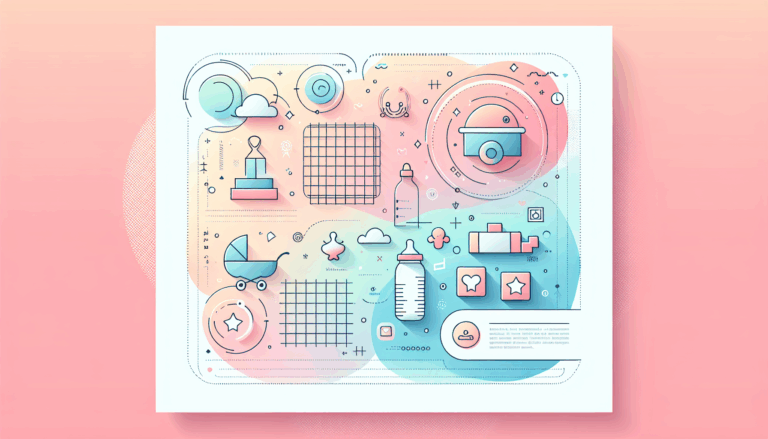Figma to WordPress: Designing for Internet of Things (IoT) Devices
Unlocking the Potential of Figma and WordPress for IoT Devices
In the era of the Internet of Things (IoT), creating seamless and efficient digital experiences is more crucial than ever. When it comes to designing for IoT devices, the combination of Figma and WordPress can be a game-changer. This powerful duo allows designers and developers to create visually stunning and functionally superior websites that can interact with and manage connected devices. Here’s a detailed guide on how to leverage Figma and WordPress for designing IoT-focused websites.
Understanding Figma and Its Role in Design
Figma is a cloud-based design platform that has revolutionized the way designers create, collaborate, and share their work. With its real-time collaboration features, Figma enables multiple designers to work on the same project simultaneously, making the design process more efficient and collaborative.
Key Features of Figma
- Real-Time Collaboration: Multiple designers can work on the same project at the same time, leaving comments and feedback directly on the design.
- Design Prototyping: Create interactive prototypes to showcase design concepts and interactions.
- Design Version Control: Easily track changes, revert to previous versions, and ensure everyone is working on the latest design.
Why Use Figma for IoT Designs?
When designing for IoT devices, consistency and precision are paramount. Figma’s design system capabilities, such as Figma Tokens, help in maintaining uniformity across different UIs. This is particularly useful for managing content that needs to be displayed on multiple touchpoints, including websites, mobile apps, and IoT devices.
The Concept of Headless CMS and Its Relevance to IoT
A headless CMS separates the back-end content management from the front-end presentation, allowing for greater flexibility in delivering content across various platforms. This architecture is particularly beneficial for IoT applications, where content needs to be managed centrally and displayed consistently across different devices.
Benefits of Using a Headless CMS with Figma
- Content Consistency: Ensures uniformity across different UIs, which is crucial for IoT devices.
- Structured Content: Makes it easier for writers to focus on content without worrying about design layers.
- Design System Integration: Figma design tokens can be synced with the CMS, ensuring design changes are reflected across all platforms.
Converting Figma Designs to WordPress for IoT Applications
Converting Figma designs to WordPress involves several steps, each crucial for ensuring a seamless transition from design to development.
Option 1: Manual Conversion Using HTML and CSS
For those comfortable with coding, manually converting Figma designs into HTML and CSS can offer complete control over the design process. Here’s a simplified overview:
- Review and Define Layout: Review your Figma designs and define the layout, colors, sizes, and elements to be transferred.
- Write HTML Code: Structure the website based on the Figma design using HTML.
- Apply CSS Styles: Implement CSS to replicate the visual attributes of the design.
- Integrate with WordPress: Create a custom WordPress theme or use an existing one and insert the codes into the appropriate theme files.
Option 2: Using Figma Plugins and Page Builders
For a more user-friendly approach, you can use Figma plugins and page builders like Elementor or Divi.
Using UiChemy Plugin
- Install UiChemy Plugin: Install the UiChemy plugin from the Figma dashboard.
- Select Frames to Convert: Select the frames you want to convert and click ‘Convert to Elementor’.
- Import into WordPress: Import the JSON file into WordPress and edit using the Elementor editor.
Using Fignel
- Install Fignel: Install the Fignel plugin to convert Figma designs into Elementor modules.
- Convert Design Elements: Convert sections, columns, headings, videos, and images into Elementor modules.
- Customize and Import: Customize the design and import it into WordPress.
Real-World Examples and Case Studies
Example 1: Smart Home Automation Website
Imagine designing a website for a smart home automation system. Using Figma, you can create a design system that includes all the necessary elements such as buttons, sliders, and dashboards. By integrating Figma with a headless CMS and using a page builder like Elementor, you can ensure that the design is consistent across all devices, from smartphones to smart home displays.
- Define Design System: Create a design system in Figma using a template like the Material 3 Design Kit.
- Install Figma Tokens: Define design tokens using the Figma Tokens plugin.
- Export Tokens: Export the design tokens to a GitHub repository.
- Implement in WordPress: Use Elementor to create dynamic and interactive elements, ensuring the design integrity is maintained.
Example 2: IoT Device Management Dashboard
For an IoT device management dashboard, you need a design that is both visually appealing and functionally robust. Figma’s collaboration features allow multiple designers to work on the dashboard simultaneously, ensuring that all elements are correctly styled and interactive.
- Collaborative Design: Use Figma’s real-time collaboration to design the dashboard.
- Convert to WordPress: Use a plugin like UiChemy to convert the design into Elementor modules.
- Customize and Test: Customize the design in Elementor and test it across different devices to ensure responsiveness and functionality.
Tips and Tricks for Figma to WordPress Conversion
- Organize Figma Layers: Keep Figma layers neat and labeled for an easier transition to WordPress.
- Use Consistent Naming Conventions: Adopt uniform naming conventions for Figma layers and elements.
- Explore Community-Made Designs: Use pre-made designs from the Figma community to accelerate your learning curve.
Conclusion and Next Steps
Integrating Figma designs with WordPress using a headless CMS architecture offers a robust solution for managing and delivering content across multiple platforms, including IoT devices. By leveraging tools like Figma Tokens and Elementor, you can ensure design consistency and efficiency.
If you’re looking to bring your Figma designs to life on WordPress, consider reaching out to experts who specialize in this process. At Figma2WP Service, we offer tailored solutions to convert your Figma designs into fully custom WordPress themes, ensuring that every pixel matters. For more information or to discuss your project, visit our Contact Us page.
By combining the creative power of Figma with the flexibility of a headless CMS and the robustness of WordPress, you can create websites that are both visually stunning and functionally superior, even for the most complex IoT applications. Start your journey today and see the difference for yourself.
For additional resources, you can explore other tools and platforms that integrate well with Figma and WordPress, such as Elementor, Divi, and ThemeForest. These tools can help you streamline your design and development process, ensuring that your IoT-focused website is both visually compelling and technically robust.
More From Our Blog
Building a Trusted Online Hub for Parents: The Role of Design In today’s digital landscape, parenting websites and child care blogs serve as invaluable resources for families seeking guidance, community support, and expert advice. Creating an engaging, trustworthy, and user-friendly platform is essential for these sites to thrive, and design tools like Figma2WP Service have Read more…
Unlocking the Power of Hands-On Web Design with Modern Tools In today’s digital age, the ability to craft your own website has transformed from a daunting technical challenge into an engaging creative process accessible to enthusiasts, DIYers, and professionals alike. Services like Figma2WP Service empower you to convert your design concepts into fully functional WordPress Read more…


